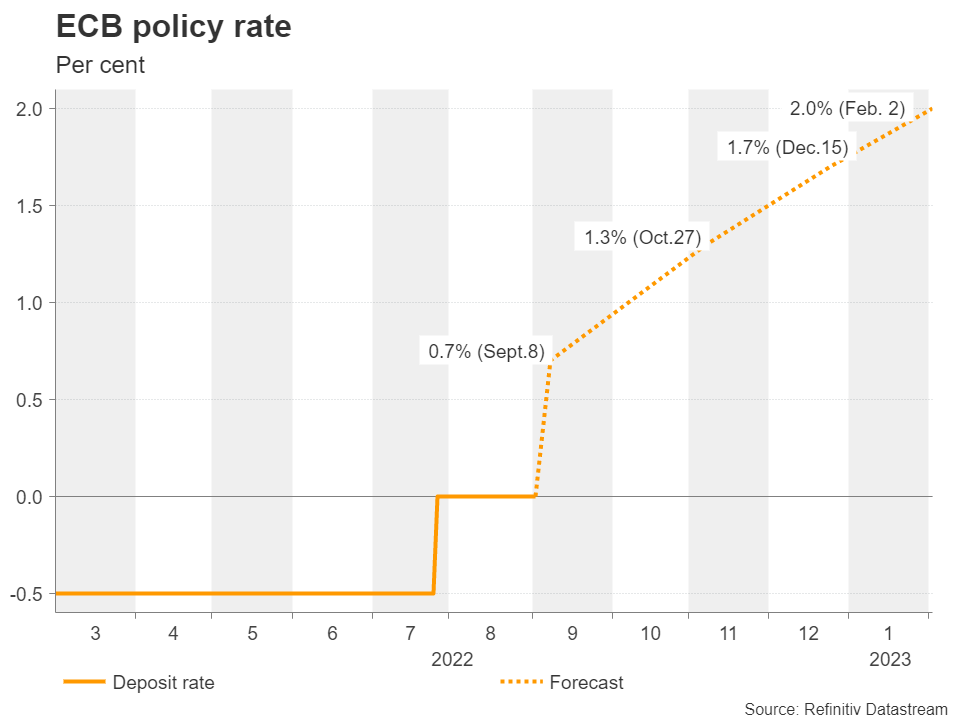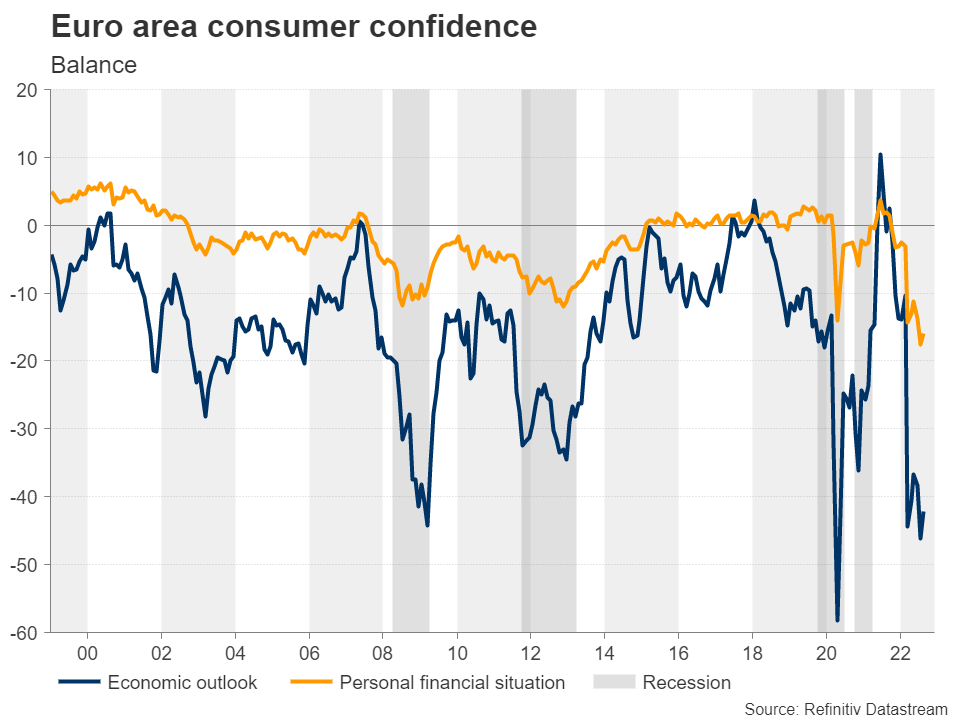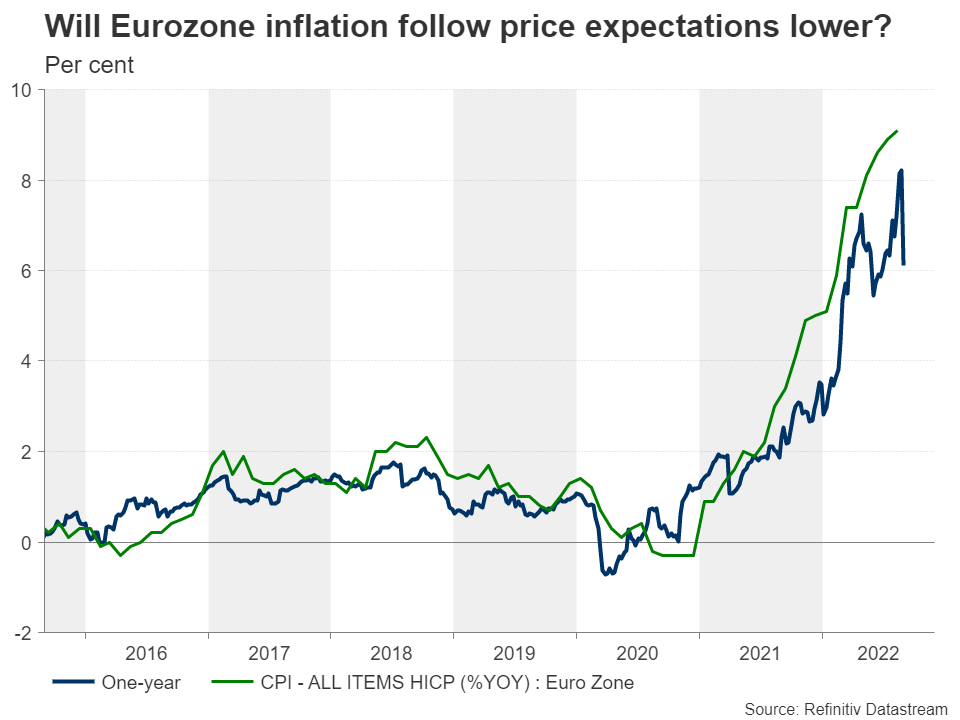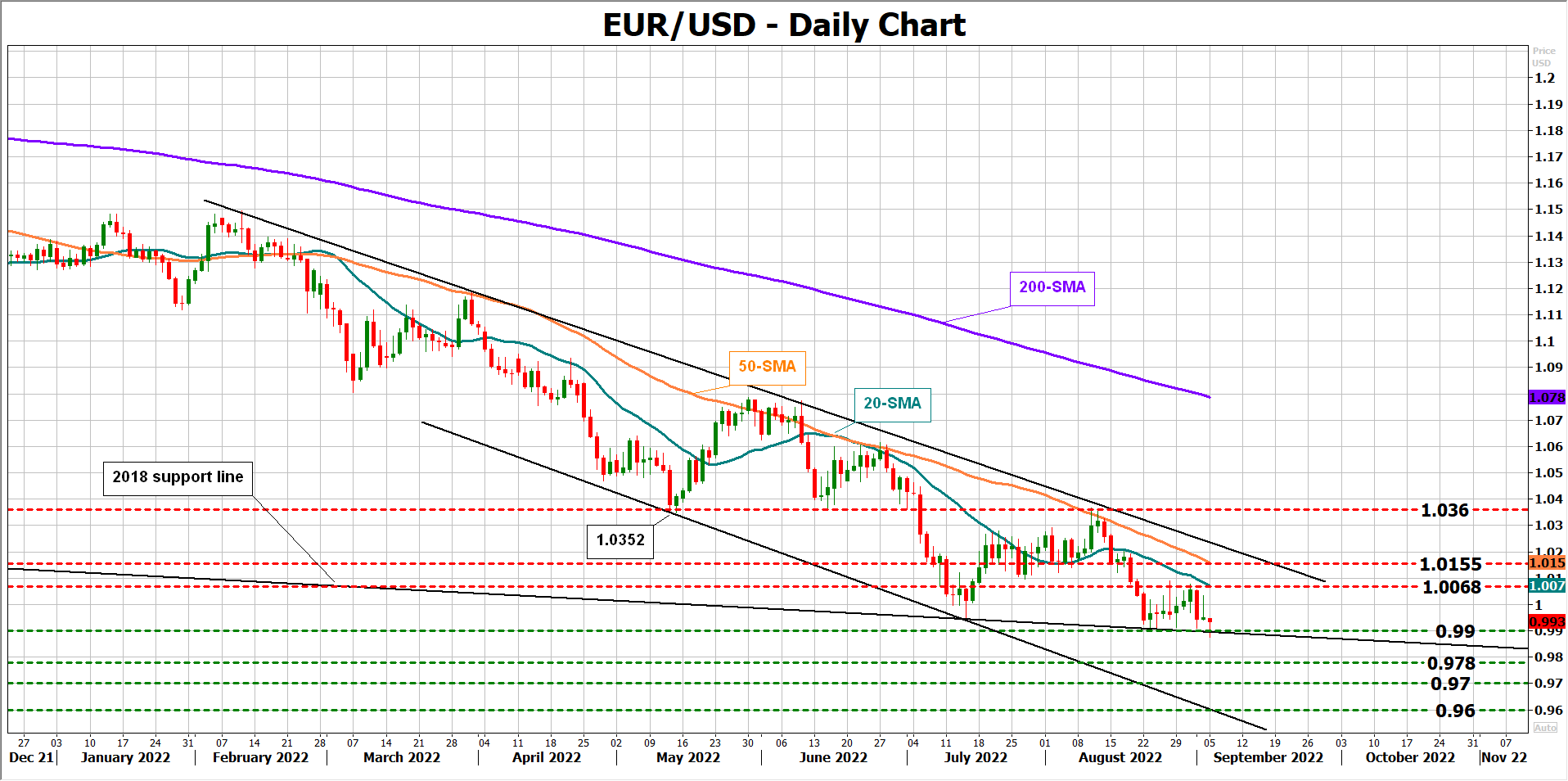It’s not a secret anymore that the eurozone will soon head into a recession but there is something that is even more certain in the region and that is inflation. The European central bank will likely provide more weight on the price risks when it gathers this week, and although it is between a rock and a hard place, it may decide to up the stakes by delivering a Fed-like rate hike. The policy announcement and new economic projections will be out at 13:15 GMT, while Lagarde's press conference will follow shortly after at 13:45 GMT. A bold rate increase and hawkish communication could put a floor under the euro.
ECB to speed up rate hike plans amid energy crunch
Constrained energy supply from Russia will likely keep blackmailing the European Union during the winter months, and the union is already making plans to intervene in the market and alleviate some pain from consumers and businesses. As usual, though, it will be a hard task to get everyone on the same page and apply a common policy throughout the region as each member state has different energy needs in various proportions.
Hence, relying on fiscal policy might be tricky, leaving the ECB the only player in town to fight inflation for now. Eurozone’s consumer prices surprisingly rose at a new record of 9.1% y/y in August and the central bank will have a good reason to act more aggressively than July, when it hiked interest rates by 50 bps. Futures markets are currently certain that policymakers will follow the Fed’s footsteps and approve a sharper 75 bps increase on Wednesday, driving the deposit facility rate up to 0.7% and the refinancing rate to 1.2%.
The latest ECB commentary has also revealed the bank's intentions for front loading rate hikes. Despite acknowledging that recession is quite possible, the Latvian policymaker Martin Kazaks said during the Jackson Hole symposium that the next rate increase “should be at least 50bps” as inflation is four times the target and could go even higher before slowing. The latter cannot be ruled out given that the eurozone is still well behind in the tightening cycle and is more exposed to the energy crunch than the US, where price pressures seem to be taking a halt - with some uncertainty - and borrowing costs have been trending up since spring.
Will the ECB save the euro?
The next question that arises at this point is whether the event will finally help the euro to reclaim parity against the dollar after several unsuccessful attempts to stay above that threshold. Well, the scenario of a 75 bps rate increase is fully priced in and did little to positively charge the bulls so far. Investors are also speculating that October’s meeting could result in another bold 0.60 bps rate increase with a probability of 73%. Therefore, the announcement itself may not have the power to stage an exciting rally either on Wednesday if it indeed materializes. Admittedly, the growth outlook will get even darker as the latest data evidence continues to deteriorate, with the August PMI survey diving further in the contraction area on the back of easing demand, high input costs, and falling new orders. Consumer and business confidence indices have also been nosediving.
Encouragingly, unlike previous economic shocks, the labor market remains tight, pressing the unemployment rate to a new record low of 6.6% in July. That combined with ongoing negotiations for higher wages in the union as well as the elevated savings rate, which is still hanging above pre-pandemic levels despite its negative trend, may incentivize a more aggressive monetary response to inflation dynamics.
Investors, however, could still drive the common currency higher if the central bank telegraphs a double digit inflation rate in the coming months or generally a high and sticky inflation stretched out to 2024. The headline CPI looks to be moving in tandem with the one-year inflation expectations, which tumbled significantly lately but remained well above the 2.0% target. If upward revisions guide hotter rate increases ahead and Lagarde underlines that fighting inflation will remain the top priority for the central bank even if the economy faces some injuries during her press conference, the euro may reclaim parity and test the 20-day simple moving average (SMA) at 1.0068. A steeper ascent could meet the 50-day SMA at 1.0155, though only a fruitful rally above the 2022 bearish channel and the 1.0200 number would make the bullish wave more credible. Note that longer-term inflation expectations keep hanging above 2.0%.
Alternatively, if policymakers see inflation peaking in the horizon, delivering a safer 50 bps rate hike and choosing a gradual tightening method amid the dull economic backdrop, the euro could slump below the 0.9900 support area to test the 0.9780 – 0.9700 region. Having said that, it’s questionable whether the ECB would enjoy a weakening euro, which will add more upside pressure to import prices.
Whether the bearish trend in euro/dollar will worsen or reverse will depend on how real and brutal the recession risk will appear amid the heightened geopolitical risks in the year ahead. Hence, any guidance updates could be taken with a pinch of salt, as the ECB could adjust its policy accordingly, especially if the weakness in demand results in higher unemployment rates across the bloc.
Forex trading and trading in other leveraged products involves a significant level of risk and is not suitable for all investors.
Recommended Content
Editors’ Picks

EUR/USD remains near 1.0400 post-US PCE
The US Dollar’s inconclusive price action allows some recovery in EUR/USD, keeping the pair around the 1.0400 region following the release of PCE inflation data for the month of January.

Gold flirts with three-week lows near $2,850
Gold remains on a negative footing around the $2,850 mark per ounce troy, following US inflation data that matched initial estimates, while US yields maintain a slight bearish tone across the curve.

GBP/USD clings to gains just above 1.2600 after PCE data
GBP/USD remains positively oriented in the 1.2600 neighbourhood as the Greenback is navigating a vacillating range following the PCE inflation release.

The week ahead – US Payrolls, ECB rate meeting, ITV results – W/c 3rd March
Having seen the Federal Reserve keep rates on hold last month the US labour market continues to show remarkable resilience, despite seeing a slowdown in hiring in January, after a blow out December number.

Weekly focus – Tariff fears are back on the agenda
While the timing of the EU measures remains still uncertain, Trump surprised markets on Thursday by signalling that the 25% tariffs on Canada and Mexico will be enacted when the one-month delay runs out next Tuesday.

The Best brokers to trade EUR/USD
SPONSORED Discover the top brokers for trading EUR/USD in 2025. Our list features brokers with competitive spreads, fast execution, and powerful platforms. Whether you're a beginner or an expert, find the right partner to navigate the dynamic Forex market.



